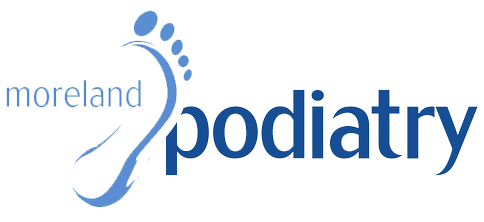Ingrown toenails often cause pain and swelling. It is a common condition that usually affects the big toe. An ingrown toenail is caused when the corners/edges of the nail grow into the skin – the nail, embedded in the soft flesh, this leads to pain, inflammation and if untreated, infection.
What causes Ingrown Toenails?
Ingrown toenails can be caused by a variety of different factors. These include:Incorrect nail clipping technique
- Unusual nail curvature
- Trauma to the area
- Tight footwear
- Tight fitting socks or stockings
- Friction with adjacent toe
- Poor foot hygiene or excessive sweating
- Hereditary/ genetic factors
Nail Care Tips

- Cut your toenail straight across with clean toenail clippers.
- Don’t round the corners of your nails
- Don’t clip your nails too short
- Cut your nails after a bath or shower
- Keep your feet clean and dry
- Wear proper-fitting shoes with enough space for your toes (don’t wear shoes that crowd your toes). Ensure your shoes aren’t too short, too flat or too narrow.
- If you struggle to trim your own nails – see a Podiatrist regularly for professional trimming
Signs you should see a Podiatrist
- Symptoms of Ingrown toenails
- Redness around your toenail
- Pain or tenderness along one or both sides of your nail
- Swelling / Inflammation of your toe
Infection
There are a number of at-home remedies for ingrown toenails and while some may provide relief, these treatments often take a number of days or even weeks. Comparatively a Podiatrist will provide relatively fast and pain-free treatment. We recommend you visit us as soon as symptoms appear.
The longer you leave an ingrown toenail untreated – the higher the risk of bacteria entering the wound and causing infection. You should make an immediate appointment with one of our experienced Podiatrist if:
- Your ingrown toenail begins to pus
- The redness around the area is starting to spread
- The pain is becoming significantly worse
- Your at-home remedies are not providing relief and you’ve seen no improvement after 2-3 days.
Do not wait to make an appointment if you are diabetic or suffer from peripheral vascular disease as these conditions make it more likely you’ll suffer complications.
What to expect when you visit your Podiatrist?
Here at Moreland Podiatry, we will assess the severity of your ingrown toenail, the root cause and the frequency of reoccurrence. Treatments range from routine nail care or a simple surgical procedure. Whatever option is recommended by our Podiatrist during your consultation you will be able to walk out with minimal disruption to your day-to-day life.
Ingrown Toenail Surgery is a minor procedure usually painless due to the administration of a local anaesthetic. It involves the removal of the ingrown toenail along the matrix. The matrix is where the nail begins to grow and a chemical is applied to prevent it from regrowing again.
No stitches are needed and the skin will heal to give a normal looking nail only slightly narrower.
Our Podiatry Clinic will be able to provide you with advice on the proper management and care of your ingrown toenails. We are conveniently located in West Brunswick. Please don’t hesitate to contact us if you have any concerns.





Recent Comments